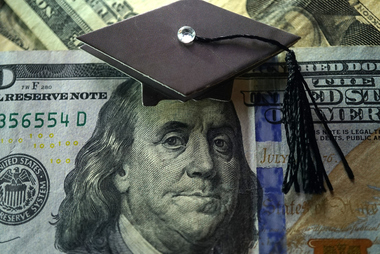Posted in Triplett & Carothers on March 1, 2022
Planning for college for yourself or a child? If you can’t pay cash for your education, part of your planning process will be finding loans, but there’s more than one kind of student lender. You’ll have to look at federal student loans provided by the government and at private student loans from banks, credit unions, and other financial institutions. Each has its own loan eligibility criteria and its own application process.
One thing they have in common is that borrowers have to pay back the money they borrow, plus interest, whether they graduate or not. Generally, federal student loans have more flexibility than private loans; borrowers don’t need a credit check in order to be considered, and some federal loans offer income-driven repayment plans with a rate of repayment based on the borrower’s salary after college.
Private student loans tend to be higher interest, but they’re available to many students who don’t qualify for other types of aid. They offer the choice of a fixed or a variable interest rate and different repayment plans. For example, some allow you to make interest-only or fixed payments while you’re in school, which could lower your total student loan cost.
Some private student loans allow you to track your credit health for free with quarterly FICO credit scores. And there are other ways to borrow money to pay for college, including personal loans, tuition payment plans, home equity loans, and 401(k) retirement plans.
How to get aid
The first step in getting student aid is filing the Free Application for Federal Student Aid, or FAFSA, to see what scholarships and loans you qualify for. There’s no cost for submitting it if you file through the official FAFSA site. Complete a FAFSA for every year you need money for college. Get it in as soon after October 1 as possible because some grant money is awarded on a first-come, first-served basis.
For private student loans:
- Go to the lender’s website.
- Check the interest rate of each loan, and find out if it has flexible repayment options.
- Apply directly on the website, choosing the repayment options and interest rate type you want.
- You can consider adding a co-signer to improve your chances of getting the loan.
- Your credit and that of your co-signer will be checked, and then the decisions will be made.
Filing a federal student loan application and getting a credit decision takes about 15 minutes. Private loan applications online are similarly quick. Remember that you’ll have to pay back your loans with interest, so don’t borrow more than you’ll need for school costs.
Reach out to Roz Carothers and her team at Triplett & Carothers to learn more.
©2022


